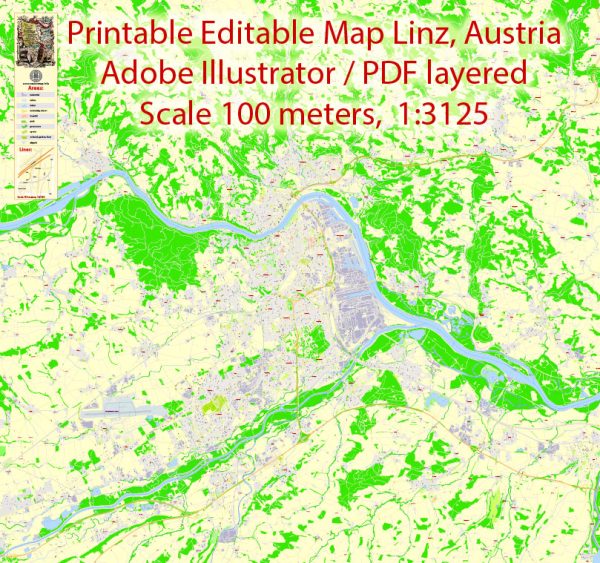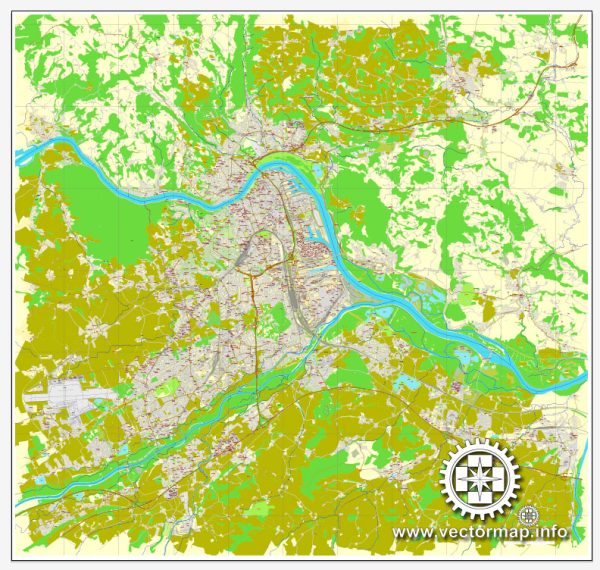Some information about the history and transportation infrastructure of Linz, Austria.
Vectormap.Net provide you with the most accurate and up-to-date vector maps in Adobe Illustrator, PDF and other formats, designed for editing and printing. Please read the vector map descriptions carefully.
History: Linz is a city located in the northern part of Austria, along the Danube River. It has a rich history that dates back to Roman times when it was known as Lentia. Over the centuries, Linz developed as a trading and cultural hub. It became an important center for trade, particularly due to its strategic location on the Danube River.
During the medieval period, Linz grew as a market town and became a significant point along the trade routes between eastern and western Europe. It gained prominence as a commercial and cultural center in the 17th century when it became the capital of Upper Austria. The city continued to evolve through the centuries, experiencing various architectural and cultural influences.
In the 20th century, Linz played a role in the industrialization of Austria. It was an important center for steel production and chemical industries. After World War II, the city underwent reconstruction and economic development, transforming into a modern and dynamic urban center.
Transportation Infrastructure: Linz has a well-developed transportation infrastructure that facilitates easy movement within the city and connections to other parts of Austria and Europe.
- Public Transportation:
- Trams and buses: Linz has an efficient public transportation system consisting of trams and buses that cover the city and its surrounding areas. The network is well-connected, making it convenient for residents and visitors to navigate the city.
- Rail Transportation:
- Main railway station: Linz Hauptbahnhof is the main railway station in the city. It is a major hub for both domestic and international train services. The railway connections link Linz to other Austrian cities as well as neighboring countries.
- Road Infrastructure:
- Highways and roads: Linz is well-connected by road with a network of highways and roads that link it to other cities in Austria and beyond. The A1 and A7 motorways pass through Linz, providing efficient road transport.
- Cycling Infrastructure:
- Linz is a bicycle-friendly city with dedicated cycling paths and bike-sharing programs. The city promotes sustainable transportation options, and cycling is a popular mode of transport.
- Air Transportation:
- Blue Danube Airport Linz: The city is served by the Blue Danube Airport, which provides domestic and international flights. It facilitates air travel for both business and leisure purposes.
Linz’s transportation infrastructure reflects its status as a regional hub with easy accessibility by various modes of transportation. Ongoing developments in infrastructure continue to shape the city’s connectivity and accessibility. For the latest and most accurate information, it is advisable to check official sources and local updates.



 Author: Kirill Shrayber, Ph.D.
Author: Kirill Shrayber, Ph.D.